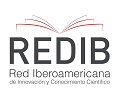PROPUESTA DE UNA METODOLOGÍA PARA CUANTIFICAR LA ACTIVIDAD ANTIBACTERIANA DE LA MIEL
DOI:
https://doi.org/10.14409/favecv.v19isuplemento.10934Palabras clave:
Miel, Staphylococcus aureus, Cuantificación, Actividad antibacteriana.Resumen
In this study a standardized method for objectively comparing the antibacterial activity of honey was developed. The assay was performed using a strain of S. aureus and four honeys that have been shown antibacterial activity against this strain. The antibacterial activity of honeys were checked by using an agar plate diffusion method using S. aureus (ATCC 29213) as the test organism. On the surface of each agar plate six stainless steel cylinders with a diameter of 8,14 mm were radially disposed. Onto each cylinder 0,1 mL of sample honey at 10% v/v was placed and all Petri dishes were incubated at 35°C during 24 h. Each sample were analyzed by triplicate. The surface of the cylinder diameter was set as reference antibacterial activity equivalent to minimal inhibitory concentration (MIC). The antibacterial activity of each honey was quantitated by the relationship between the surface of the inhibitory zone and the surface of the reference activity expressed as multiples of MIC (x MIC). The method allowed establishing differences between the bacterial activities of the different honeys tested and could be used for identifying honeys that could be employed with medicinal purpose for the treatments of wounds.
Descargas
Publicado
Cómo citar
Número
Sección
Licencia
FAVE Sección Ciencias Veterinarias ratifica el modelo Acceso Abierto en el que los contenidos de las publicaciones científicas se encuentran disponibles a texto completo libre y gratuito en Internet, sin embargos temporales, y cuyos costos de producción editorial no son transferidos a los autores. Esta política propone quebrar las barreras económicas que generan inequidades tanto en el acceso a la información, como en la publicación de resultados de investigaciones.
Los artículos de la revista son publicados en http://bibliotecavirtual.unl.edu.ar/publicaciones/index.php/FAVEveterinaria/issue/current/, en acceso abierto bajo licencia Creative CommonsAtribución-NoComercial-Compartir Igual 4.0 Internacional.











